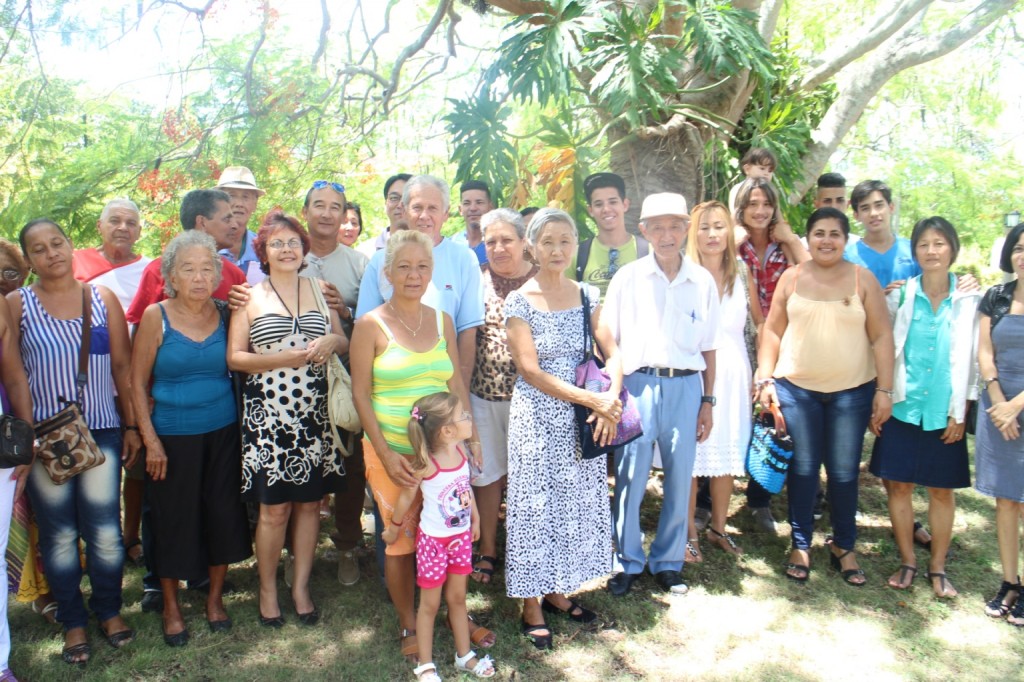- California Assembly OKs highest minimum wage in nation
- S. Korea unveils first graphic cigarette warnings
- US joins with South Korea, Japan in bid to deter North Korea
- LPGA golfer Chun In-gee finally back in action
- S. Korea won’t be top seed in final World Cup qualification round
- US men’s soccer misses 2nd straight Olympics
- US back on track in qualifying with 4-0 win over Guatemala
- High-intensity workout injuries spawn cottage industry
- CDC expands range of Zika mosquitoes into parts of Northeast
- Who knew? ‘The Walking Dead’ is helping families connect
History of Korean Cuban community
Korea Times Project, part 3c

Korean Cubans got together at Matanzas’ Evangelical Seminary of Theology to celebrate Korean Independence on August 15, 2015.
By Kim Sang-mok
The 288 Koreans who arrived at Cuba’s Port Manatee on March 11, 1921, were henequen farmers and laborers from Merida, Mexico.
Ninety four of them arrived in Mexico from an Incheon, South Korea, port, in 1905; the rest were children of those immigrants.
The 288 immigrants were in search of better living conditions by landing in Cuba, but what they found was trouble in the form of no governmental protection — because Korea had been taken over by Japanese imperial rule, the Koreans had no papers, no official homeland.
Cuban immigration authorities implored the group to identify themselves as Japanese citizens; the immigrants refused. They stayed put inside the boat for 17 days after arriving at the port before being accepted as “Coreanos.”
Once on land, they crowded in Matanzas, on the northern shore of the island.
They had hopes of joining in on sugar cane farming, which had promised better profit than henequen. The reality upon their arrival, however, was that of a shaky Cuban economy and unemployment.
Eventually, the Koreans turned back to what they did best — henequen farming — in a village near Matanzas called El Boro. It was here that they settled, and it’s there today, at its entrance, that the Memorial Coreano stands.
“They woke up at 4 a.m. every morning and worked until 5 p.m., working on the farm under the searing sun. My mother and father would then take on other jobs, like working at restaurants,” said Martha Lim, 76, a noted Korean Cuban community leader and daughter of independence activist Lim Chun-taek.
There were about 10 shacks without running water or electricity in El Boro, but it was where the fledgling Korean Cuban community grew, setting up schools and churches.
It birthed the youth society and women’s society of the Korean National Association through the liberation movement.
















Pingback: Cuban Food | INSURANCE, LOAN, BANKING, MORTGAGE, ATTOMEY, CREDIT
Aiyoung Choi
September 30, 2015 at 7:57 AM
“Coreanos en Cuba” is a subject very close to my heart. In 2004 I met Martha Lim, retired professor of Marxist philosophy and her late husband Raul R. Ruiz, noted Cuban historian, in Matanzas where filmmaker Daisil Kim Gibson and I spent an entire week with them to make a documentary film titled “Motherland.” I am now working on a Spanish-English translation of “Memorias” written in 1973 by Jose Sanchez Pac on “Coreanos en Mexico.” I would love to hear from anyone who is also interested in this important migration history.
Aiyoung Choi (aiyoung.choi@gmail.com)